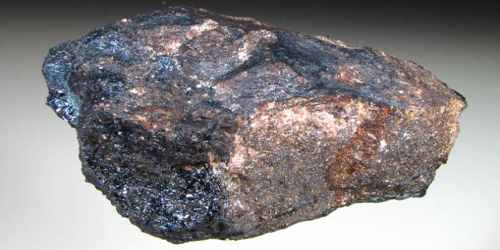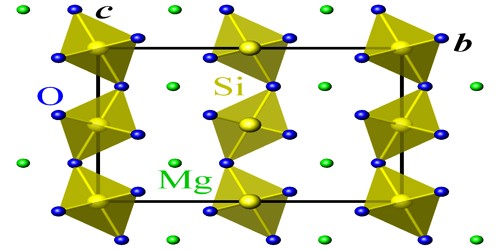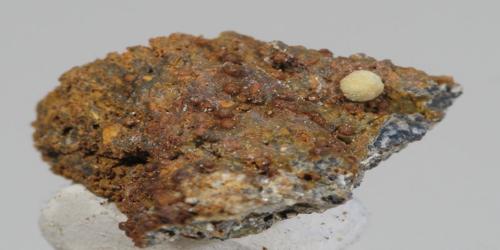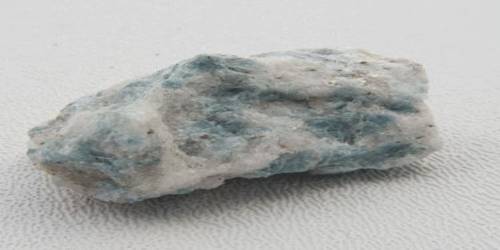Definition –
Prasiolite (also known as green quartz, green amethyst or vermarine) is a yellow-green to green variety of quartz that is cut into faceted stones for use in jewelry or purchased by gemstone collectors. It is produced by the three processes described below:
- Heat-Treated Amethyst: Most prasiolite is produced by heating natural amethyst in a laboratory oven to about 500 degrees Celsius. This heating changes the amethyst’s color from purple to green or yellowish green.
- Irradiated Amethyst: A small amount of prasiolite is produced by irradiating natural amethyst. This produces prasiolite with a light green color. The green color is often unstable and can fade to colorless if the stone is exposed to temperatures over about 150 degrees Celsius.
- Naturally Heated Amethyst: Another small amount of amethyst is heated by natural processes. It is found where an amethyst-bearing rock unit has been heated by younger lava flows or nearby intrusions.
Prasiolite comes from the Greek words ‘prason’, which means leek, and ‘lithos’, which means stone. Other names used for prasiolite are “praseolite” and “praziolite.” It is one of the most beautiful semi-precious stones that you will ever see. Its pale green to almost yellow color makes it a great stone for making jewelry. Prasiolite is also known as Lime Citrine, Green Amethyst, Green Quartz, Veregreen, and Amegreen.

Occurrence and Properties of Parsiolite –
Since 1950, almost all natural prasiolite has come from a small Brazilian mine, but it is has also been mined in Lower Silesia in Poland. Naturally occurring prasiolite has also been found in the Thunder Bay area of Canada. As of February 2019, the only mine producing prasiolite is in Brazil but even that is almost mined out.
An interesting deposit near Susanville, California has amethyst, citrine, and prasiolite in talus. This talus is at the base of a steep exposure of metavolcanic basalts and andesites. The amethyst in this deposit formed in the cavities of a solidified lava flow.
Other deposits of natually green quartz that have been called prasiolite have been found in the Sokolowiec, Kaczawskie, and Lower Silesia areas of Poland. The color of the quartz is thought to be derived from iron ions within the quartz crystal structure. Some of this green quartz occurs as crystals in amygdules, and some occurs as a central crystalline zone in agate nodules.
Prasiolite sometimes forms naturally, but it is most often produced synthetically. This gemstone occurs when natural amethyst is subjected to intense heat or radiation. It forms naturally when an amethyst-bearing rock is heated by lava flows. Most examples of it, however, are synthetically created by heating amethyst to about 500 degrees Celsius. It can also be produced by irradiating amethyst.
While often referred to as green amethyst because it is made from heated or irradiated amethyst, this name is a bit of a misnomer. By definition, amethyst is a purple type of quartz. As a result, calling prasiolite “green amethyst” is a contradiction of terms.
Natural prasiolite is a very light, translucent green. Darker green quartz is generally the result of artificial treatment. As a variety of quartz, prasiolite has a Mohs hardness of seven and does not have cleavage.
Care and Storage of Prasiolite –
Prasiolite produced by heat treatment should be stored with care. When exposed to strong sunlight and some types of artificial light for long periods of time, the green color can fade. People who own prasiolite gemstones and jewelry can protect their gems by storing them in darkness. A dark jewelry box, cabinet, or bag can provide protection.
Prasiolite is best worn as jewelry. Wearing this powerful stone keeps its energies close to your auric field and makes you more likely to experience its many benefits. Wearing it as a necklace or earrings keeps it close to your crown, third eye, and heart chakras, but wearing it anywhere may be beneficial.
Prasiolite should also be protected from heat. It should not be stored near a source of heat in the home. It should not be left in cars that will be heated by the sun. If a piece of prasiolite jewelry is being repaired, the stone should be removed from the metal setting to protect it from heat during soldering and heating. Sellers should explain proper storage methods to every person who purchases prasiolite. Some sellers and buyers are unaware of the gem’s fragile color.
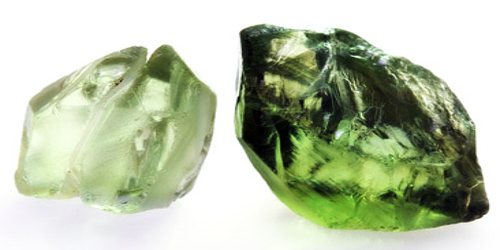
Uses and Benefits of Parsiolite –
Most prasiolite sold is used in jewellery settings, where it can substitute for far more expensive precious gemstones.
It is a rare stone in nature; artificially produced prasiolite is heat treated amethyst. Most amethyst will turn yellow or orange when heated producing citrine, but some amethyst will turn green when treated. Currently, almost all prasiolite on the market results from a combination of heat treatment and ionizing radiation.
The unique yellow-green to green color of prasiolite makes it popular for jewelry making. The unique stone can be used to make captivating bracelets, necklaces, earrings, and rings, and it is a good choice for designers who are looking for something unique to add to their product lines.
Synthetic quartz in a wide range of green colors is produced in laboratories around the world by the hydrothermal method. Some synthetic green quartz has a leek-green color similar to prasiolite. This synthetic quartz often enters the gem market as rough, cabochons, beads, and faceted stones. Some of this synthetic quartz is sold at prices that are low enough to reveal its identity. It is also probable that some green synthetic quartz is being sold as prasiolite without disclosure. Buyers should be cautious in transactions and purchase only from trusted sellers.
Prasiolite is thought to amplify the energies inside our hearts and mind. It is a stone of originality and may inspire people to share their unique gifts and talents with the world. It also believed to contain energies of courage, and when people have it working for them, they may find that no problem is too large to overcome. It can help us become more self-reliant and feel capable of getting our self out of a difficult situation.
This stone is believed to attract wealth and abundance while helping people manifest their goals and keeping them motivated. It can clear our minds and enable us to find new opportunities. This gemstone is thought to have physical healing properties, too. It is seen as a natural detoxifier and thought to help cleanse the body. It may also help with nutrient absorption and neutralize stomach acid.
Information Sources:

